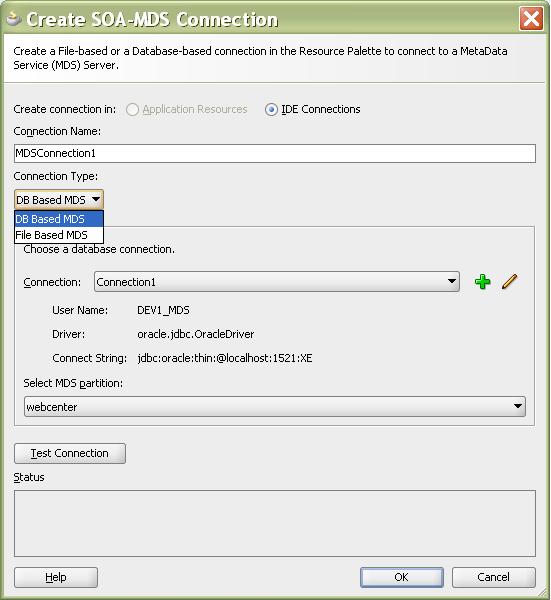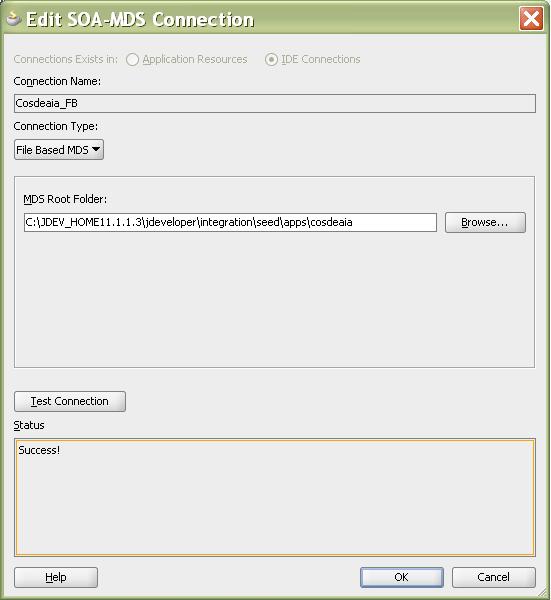There are several steps that need to be completed before you can create a business service in OSB to access/modify data in a database table. At a high level you will need to create the JCA Adapter files in JDeveloper, create the data source/connection pools in Weblogic and then import the JCA Adapter files into OSB. Below are the detailed steps.
1. Create JCA Adapter in JDeveloper
2. Create a zip file with the JCA Adapter files that you need for the import. It needs to be in a zip file to import into OSB. Note: You can get the location of these files by clicking on them in JDeveloper.
a. Add the following to the zip file
i. <Project>.wsdl
ii. <Project>_db.jca
iii. <Project>_db-or-mappings.xml
iv. <Project>_table.xsd
3. Create a New Data Source in Weblogic
4. Link DB Adapter outbound connection pool to a data source
5. Import JCA Adapter files
a. Log into the OSB Console
b. Navigate to the project you are working on
c. Create a directory to hold the JCA Adapter files (<Project>/Resources/jca)
d. In the Create Resource menu, select Bulk -> Zipped Resources
e. Select the zip file created in step 2.
ii. Start by fixing the wsdl conflict as this should resolve all of the conflicts. This can be fixed by changing the schemaLocation.
2. Create a zip file with the JCA Adapter files that you need for the import. It needs to be in a zip file to import into OSB. Note: You can get the location of these files by clicking on them in JDeveloper.
a. Add the following to the zip file
i. <Project>.wsdl
ii. <Project>_db.jca
iii. <Project>_db-or-mappings.xml
iv. <Project>_table.xsd
3. Create a New Data Source in Weblogic
4. Link DB Adapter outbound connection pool to a data source
5. Import JCA Adapter files
a. Log into the OSB Console
b. Navigate to the project you are working on
c. Create a directory to hold the JCA Adapter files (<Project>/Resources/jca)
d. In the Create Resource menu, select Bulk -> Zipped Resources
e. Select the zip file created in step 2.
f. Select Next
g. All of the files that you added to your zip file in step 2 should now be displayed on the Review Loaded Resources page.
h. Select Import.
i . Fix Conflicts.
Note: You will need to fix any path conflicts caused by moving all of the files into the same area. In JDev the schema files are in a different directory.
i. Click on View Conflicts.
iii. Activate Changes.
4. Create Business Service
a. Create WSDL that will be used by the Business Service. This WSDL will have the operations that you specified when you were creating the JCA Database Adapter in step 1.
i. Navigate to the *.jca file that was imported in Step 3 (<Project>/Resources/jca)
ii. In the Actions column next to the JCA Binding file imported click on the Generate WSDL and Service from this JCA binding resource button.
iii. Specify the new WSDL Name and New Service Name. Also, choose a location for the new WSDL file. To avoid confusion, we put it in the BuisnessServices folder.
iv. Select Generate.














